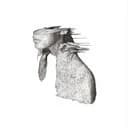The D♭ major scale follows the major scale pattern with five flats: D♭ to E♭ (whole step), E♭ to F (whole step), F to G♭ (half step), G♭ to A♭ (whole step), A♭ to B♭ (whole step), B♭ to C (whole step), and C to D♭ (half step). With D♭, E♭, G♭, A♭, and B♭ in its key signature, this scale produces an exceptionally warm, velvety sonority that has captivated Romantic composers and modern songwriters alike. The interval pattern (2-2-1-2-2-2-1 semitones) maintains the major scale structure while the five flats create a rich, smooth tonal quality that feels luxurious and deeply expressive, making it ideal for intimate piano works and emotional ballads.
Why D♭ Major is Preferred Over C♯ Major
D♭ major and C♯ major are enharmonic equivalents, sounding identical but using different notation. D♭ major (five flats) is almost universally preferred over C♯ major (seven sharps) for practical reasons. Reading five flats is significantly easier than navigating seven sharps, including the rarely encountered B♯ and E♯. Composers overwhelmingly choose D♭ major when they want this particular pitch center, recognizing that musicians can read and perform it more efficiently. This pragmatic choice demonstrates how music notation prioritizes readability and performer comfort alongside theoretical completeness, making D♭ major the standard spelling for this beautiful key.
D♭ Major in Romantic and Contemporary Music
D♭ major has been a favorite of Romantic piano composers who exploited its rich, velvety character. The key's five flats create a comfortable hand position on the piano, with the black keys providing natural landmarks for the fingers. In contemporary music, songs like "The Scientist" by Coldplay and "Havana" by Camila Cabello demonstrate D♭ major's continued relevance in popular music. The primary chords (D♭ major, G♭ major, and A♭ major) create lush I-IV-V progressions that sound sophisticated and emotionally resonant. Jazz musicians occasionally explore D♭ major for its unique timbral qualities and as a way to create harmonic variety in their improvisations and compositions.
Mastering the Technical Challenges
Piano students should approach D♭ major with proper fingering (right hand: 2-3-1-2-3-4-1-2 or 3-4-1-2-3-1-2-3; left hand: 3-2-1-4-3-2-1-3), taking advantage of how naturally the five flats fit under the hands. Begin practice at 50-60 BPM, ensuring each of the five flats (D♭, E♭, G♭, A♭, and B♭) is executed accurately and automatically. The key's complexity demands careful attention to reading accuracy, as the five-flat signature can be challenging for less experienced players. However, once mastered, D♭ major feels remarkably natural on the piano, with the black keys providing a comfortable topography that facilitates smooth, legato playing and expressive dynamic control.
Mastering D♭ major represents a significant achievement in your musical development. After D♭ major, advance to G♭ Major (six flats) to complete your flat-key journey. Explore its parallel minors: D♭ Harmonic Minor and D♭ Melodic Minor. Whether you're performing Romantic character pieces or modern piano ballads, D♭ major's velvety warmth and emotional depth make it one of the most rewarding advanced scales to master.





